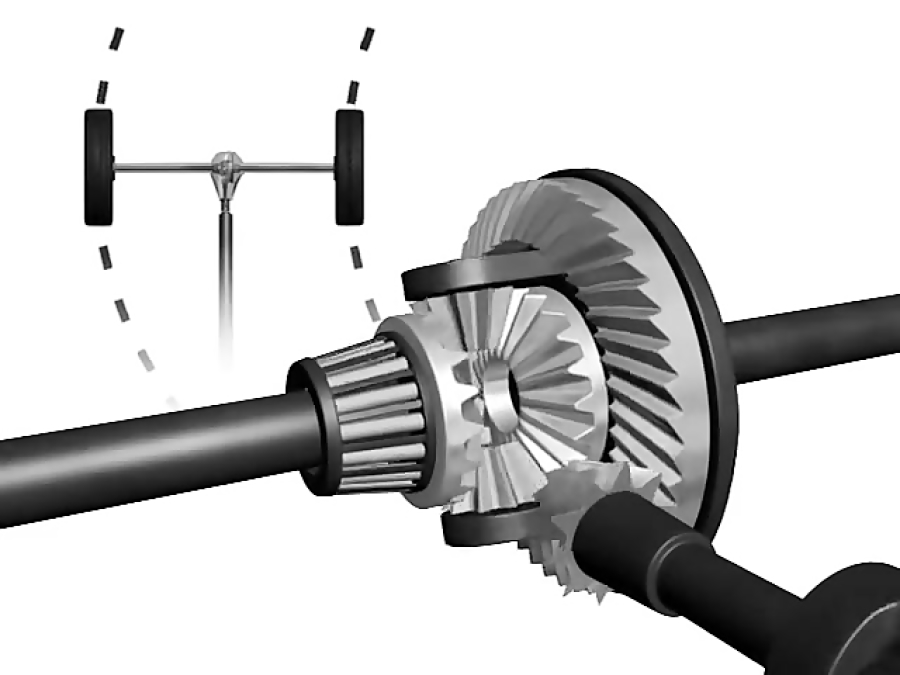A
locking differential is designed to overcome the chief limitation of a
standard open differential by essentially "locking" both wheels on an
axle together as if on a common shaft while still allowing them to
rotate at different speeds when it is required (such as when negotiating
a turn). Types of Locking Differentials There are two main types of lockers: automatic and selectable. Automatic Lockers
Selectable Lockers
Disadvantages Locking differentials do have some disadvantages. Except for the added stress on axle shafts, these disadvantages primarily
apply to automatic lockers, and can be mitigated, to some degree, by
proper maintenance and setup. Limited slip differentials are considered a compromise between a standard differential and a locking differential because they operate more smoothly, and they do direct some amount of torque to the wheel with the most traction, but they are not capable of 100% lockup. Applications for Locking Differentials Four wheel drive vehicles that drive off-road often use
locking differentials to prevent from getting stuck when driving on loose,
muddy, or rocky terrain. Race cars often use locking differentials in order to maintain traction during high speed maneuvers or when accelerating at extreme rates. Some utility vehicles such as tow trucks, forklifts, tractors, and heavy equipment use locking differentials to maintain traction, especially when driving on soft, muddy, or uneven surfaces. Lockers are common in agricultural equipment and military trucks.
Other sources of Locking Differential information:
|
||||||||||||||||||
| How-To - Transmission
How much do you know about your axles? Assuming you’re at least mildy off-road savvy (hey you’re reading this magazine!), it should be no news to you that a locking differential or a limited slip differential will greatly enhance traction and help you go further into the great outdoors.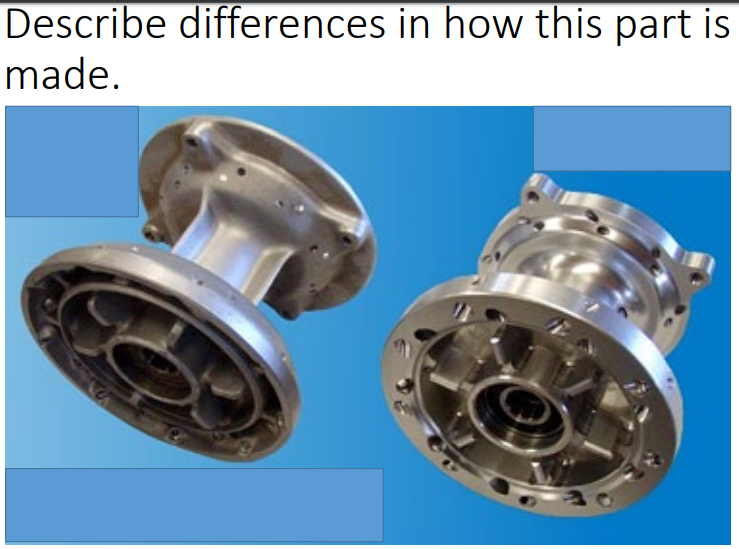
Any modern drive axle (one that transmits engine power to your wheels and tires) has a differential that allows the wheels to differentiate rotational speed. A differential is necessary on the drive axle(s) under any street-driven vehicle because the inner wheels on a vehicle rotate at a slower speed than the outer wheels when turning.
A differential that can allow one wheel to spin completely freely of the other is called an open differential. In normal driving situations, where both wheels (tires) have traction, torque is split almost equally to both wheels. But when one tire has less friction force on it, because of oh say, sand, it’s more prone to break traction. This less resistant side will start spinning faster and faster, until all power from the input shaft (the pinion gear) is going to one wheel and the other wheel stops moving completely. Not what you want off-road.
For this reason, traction-aiding differentials are extremely beneficial. The most common type of traction-aiding device in stock vehicles is a limited slip differential (LSD). A limited slip differential uses either clutches, cones, or helical gears to greatly inhibit a differentiation in wheel speed, without prohibiting it. This enhancement in traction (while still allowing one wheel to rotate faster when necessary) makes an LSD a popular aftermarket traction aid to add to trucks and cars, too.
The most common type of traction-aiding device in stock vehicles is a limited slip differential (LSD). A limited slip differential uses either clutches, cones, or helical gears to greatly inhibit a differentiation in wheel speed, without prohibiting it. This enhancement in traction (while still allowing one wheel to rotate faster when necessary) makes an LSD a popular aftermarket traction aid to add to trucks and cars, too.
For more radical terrain, a locking differential might be what you need. A locking differential can either be on full-time, or it can be selectable. A full-time locker, or automatic locking differential, has no external control and engages either when power is applied (via driveshaft) or when a difference in wheel speed is sensed, depending on what type of auto locker. A selectable locker uses a cable, electricity, or air pressure to actuate from an open to a locked position.
There are also a few selectable locking differentials out there like the factory Rubicon Wrangler diffs that toggle between being a limited slip and fully locked.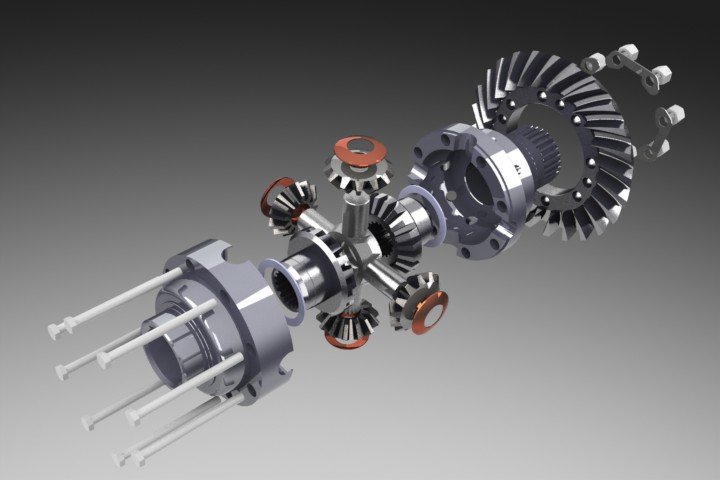 Powering both wheels at the same speed, “locked” together, both tires would have to spin at the same speed at all times.
Powering both wheels at the same speed, “locked” together, both tires would have to spin at the same speed at all times.
There is a third option for extreme traction—a spool—that isn’t really a differential, but instead goes in place of one. A spool is basically a solid chunk of metal that carries the ring gear and is broached to accept two splined axle shafts, forever locking both wheels to the same wheel speed. Most race-only trucks and cars use spools, and while locking both axle shafts together is ideal for race situations where extreme traction is required, the associated poor handling characteristics and advanced tire wear makes it so a spool is never recommended for street driving.
There is a variety of traction-aiding differentials out there, but let this be clear: Lockers and spools absolutely lock both axle shafts together with no difference in rotational speed. Anything less than 100-percent locked is either a limited slip diff, an open diff, or not properly working.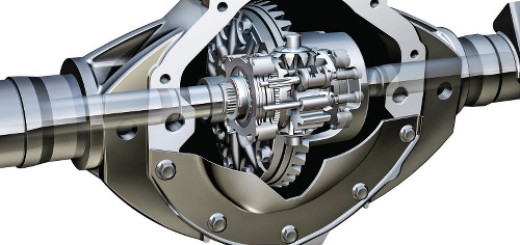
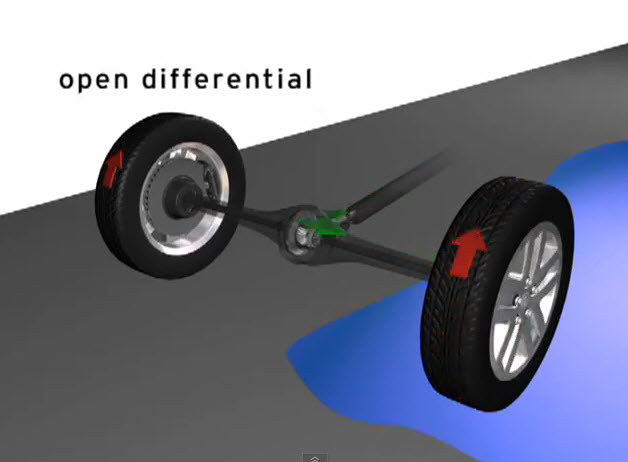 As more torque is applied, more force will be applied on the clutches or cones, and the more coupled the wheels will become. These differentials occasionally need rebuilding and replacement of the internals that can wear.
As more torque is applied, more force will be applied on the clutches or cones, and the more coupled the wheels will become. These differentials occasionally need rebuilding and replacement of the internals that can wear.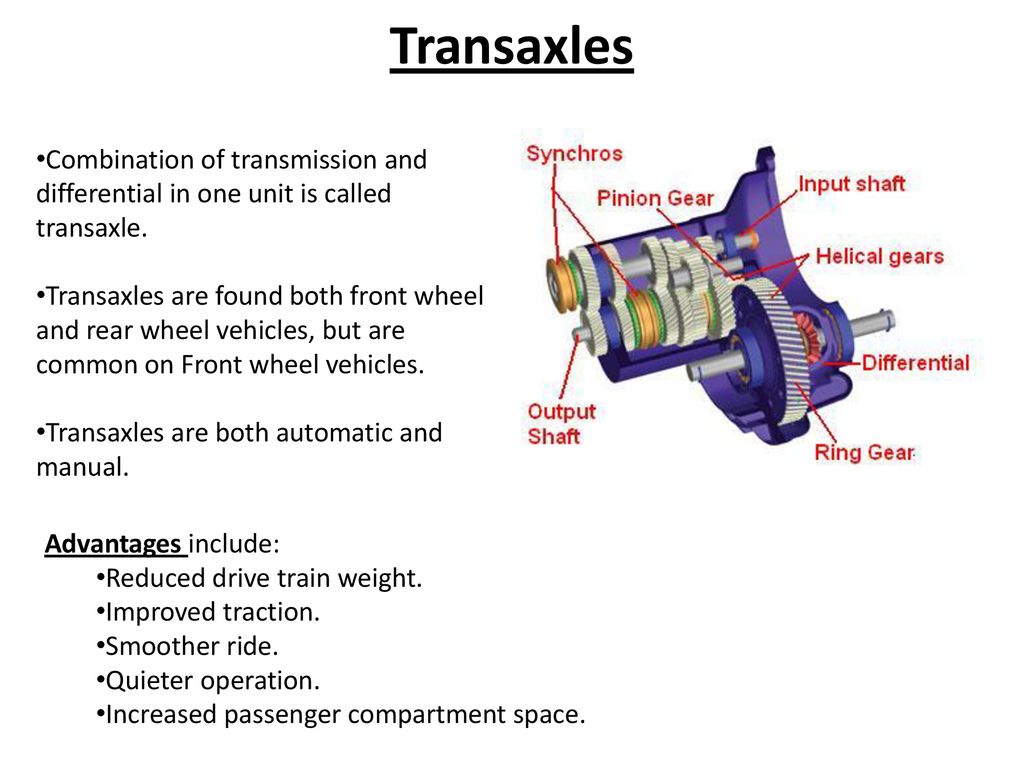 Depending on what locker, engagement and disengagement can be done using a mechanical cable, electricity, or air pressure. The OX Locker (pictured) can actually accept four different locking and unlocking methods—cable, electric, air actuation, and an emergency trail lock.
Depending on what locker, engagement and disengagement can be done using a mechanical cable, electricity, or air pressure. The OX Locker (pictured) can actually accept four different locking and unlocking methods—cable, electric, air actuation, and an emergency trail lock.When a selectable locker is locked, there is no allowance for a difference in rotational speed on either side of the axle. No matter what, both tires will turn together. In a front application, it will be very difficult to turn the steering wheel with the locker engaged if both tires have traction. Many enthusiasts find a front selectable locker very desirable—one that they can turn on and off as necessary so turning the front tires is not a problem.
 But some enthusiasts find that the automatic engagement and disengagement are not always spot-on, and sometimes an automatic locker will suddenly pop or slightly engage in a corner. This pop can sometimes sound like you’ve just broken an axle shaft and will definitely get your attention when it happens. Generally, auto lockers have been found to be a reliable, heavy-duty, no-fuss option that many off-roaders prefer.
But some enthusiasts find that the automatic engagement and disengagement are not always spot-on, and sometimes an automatic locker will suddenly pop or slightly engage in a corner. This pop can sometimes sound like you’ve just broken an axle shaft and will definitely get your attention when it happens. Generally, auto lockers have been found to be a reliable, heavy-duty, no-fuss option that many off-roaders prefer. A spool locks both axle shafts together and allows for no differentiation in wheel speed. Because a spool is a solid chunk of metal that the ring gear rides on, there are no moving parts inside of a spool to heat up or wear out. A spool is lighter, cheaper, stronger, and will run lower axle temperatures than any other option you can put in your axle. It will also push your car straight down the road creating bad understeer issues, wear out your tires in hundreds (not thousands) of miles, and create unwanted drivetrain bind. Spools should not be used for streetable applications and never in front axles.
A spool locks both axle shafts together and allows for no differentiation in wheel speed. Because a spool is a solid chunk of metal that the ring gear rides on, there are no moving parts inside of a spool to heat up or wear out. A spool is lighter, cheaper, stronger, and will run lower axle temperatures than any other option you can put in your axle. It will also push your car straight down the road creating bad understeer issues, wear out your tires in hundreds (not thousands) of miles, and create unwanted drivetrain bind. Spools should not be used for streetable applications and never in front axles.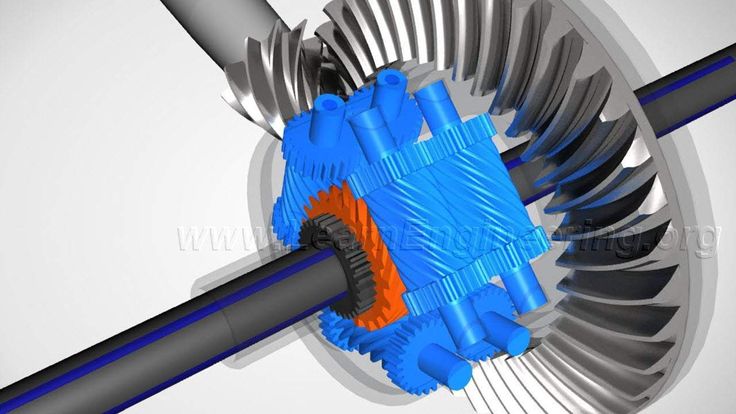 If you need to completely lock the two rear tires together for the ultimate traction, then a locker is going to be what you need. But you’ll have to choose between a selectable locker that stays “open” a majority of your driving time, and an automatic locker that can sometimes unexpectedly engage on the street, making for quite a different driving dynamic. A limited slip differential is on all the time, always discouraging a variation in wheel speed and always helping with superior traction over an open differential, but never locking both wheels together.
If you need to completely lock the two rear tires together for the ultimate traction, then a locker is going to be what you need. But you’ll have to choose between a selectable locker that stays “open” a majority of your driving time, and an automatic locker that can sometimes unexpectedly engage on the street, making for quite a different driving dynamic. A limited slip differential is on all the time, always discouraging a variation in wheel speed and always helping with superior traction over an open differential, but never locking both wheels together.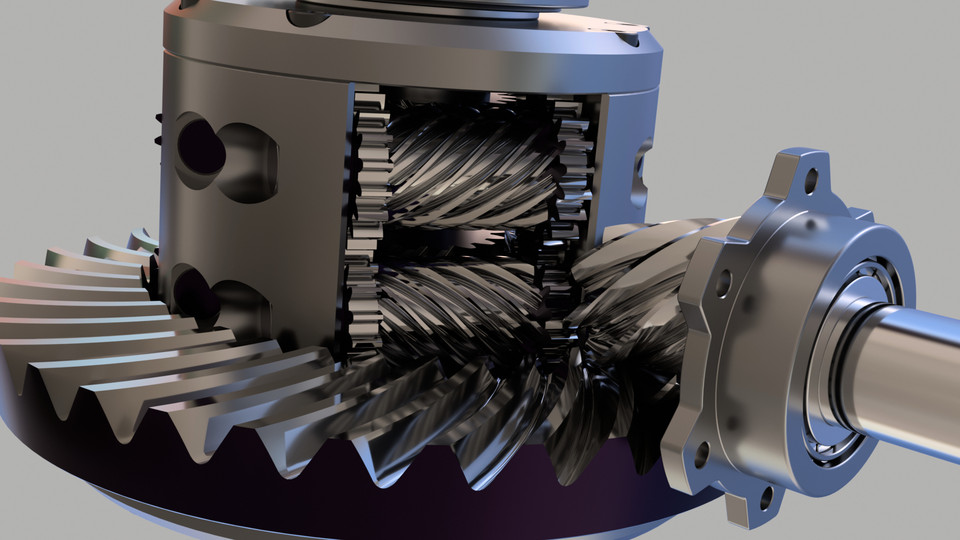 S. in 2022
S. in 2022 When driving in a straight line, such a system is sufficient - the rotation of the wheels is carried out in the same speed range. But when performing manners, the wheels move in different radii, covering different distances. Accordingly, some of them may slip. Also, this effect increases the load on the transmission components, increases the risk of damage to the drive elements.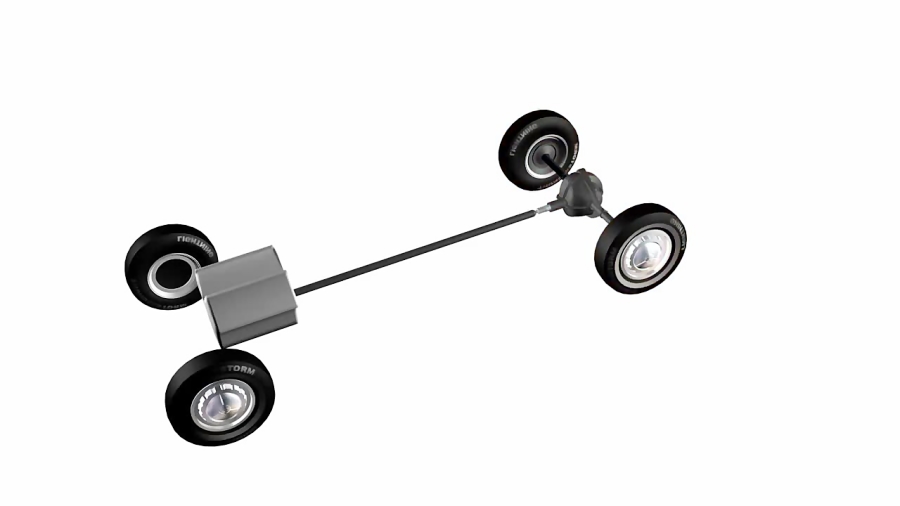
To avoid this, a differential assembly is added to the transmission system. In simple terms, how the differential works, it slows down the inside wheels and speeds up the outside ones. Thus slipping and other negative consequences of this effect are excluded.
Differentials are classified into 2 types, based on the place of installation:
The first type is used on vehicles with one driving axle. On machines with rear-wheel drive, the differential is mounted on the gearbox. On vehicles with front-wheel drive, the differential is connected directly to the gearbox.
Only all-wheel drive vehicles are equipped with a center differential. It ensures optimal distribution of rotation between the axles when moving on uneven roads. On all-wheel drive vehicles, a combination of different differential units is usually used.
Differentials are made on the basis of a planetary gearbox. They consist of drive and driven gears, satellites and housing.
They consist of drive and driven gears, satellites and housing.
Driven gears are available with the same or different number of teeth. The first are called symmetrical, due to the proportional distribution of rotation between the shafts. The second (asymmetric) perform distribution according to given values.
Symmetrical gears are mounted on interwheel differentials, asymmetric gears are mounted on interaxle ones.
How the differential works:
 The movement of the satellites contributes to an increase in the speed of rotation of the outer wheel.
The movement of the satellites contributes to an increase in the speed of rotation of the outer wheel. Thanks to the differential, the total torque does not change, but is evenly distributed between the wheels.
The differential has a significant drawback. If the resistance on some wheel disappears, then there is a sharp jump in the angular velocity. As a result, rotation is applied only to this wheel. Because of this, the second wheel stops. As a result, the car is immobilized.
To correct this problem, it is necessary to slow down the spinning wheels. This is what blocking is for.
How does the differential lock work? Full involves a rigid connection of the differential housing and one of the axle shafts. The differential simply cannot spin faster than the reduction gear. Due to this, the redistribution of rotation is excluded.
Partial lock systems limit the forces that can be transmitted between nodes.
Locking is actively used on center and wheel differentials. It can be activated automatically or manually.
It can be activated automatically or manually.
Manual differential lock - how does it work? It is activated only when needed. The driver independently chooses when to turn on the drive, as a result of which the elements of the differential assembly are rigidly coupled to each other.
Locking drives are classified into electromechanical and mechanized, as well as pneumatic and hydraulic.
Manual control involves following certain rules, knowing how the center differential lock works. If you forget to disengage the differential lock and continue driving with good traction on both wheels, there is a risk of damage to the transmission.
Systems of this type are called self-locking. They differ in that here the blocking is carried out without the direct participation of the driver.
How does a self-locking differential work? The simplest solution involves having a disk pack. Some disks are rigidly connected to the differential case, others - to the axle.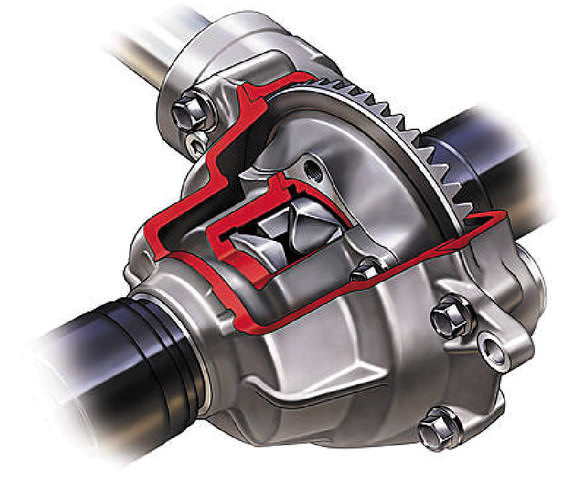 They are also tightly pressed together.
They are also tightly pressed together.
In normal operation, the disc pack rotates with the differential. With an increase in angular velocity, some of the disks begin to rotate faster. But due to friction, the increase in angular velocity slows down.
The electronic center differential lock works in a similar way. Only here ABS is used instead of disks. If on one of the wheels the angular speed increases, the brake system automatically slows it down.
Author: Alina Svardonets
Inadvertently stepping on the gas can be enough to tip or fall off the ATV, for example, on a steep slope or when making a sharp turn. Due to the high center of gravity, small width and short wheelbase, the equipment easily stands on 2 wheels. At the same time, a fall, even at low speed, threatens with fractures.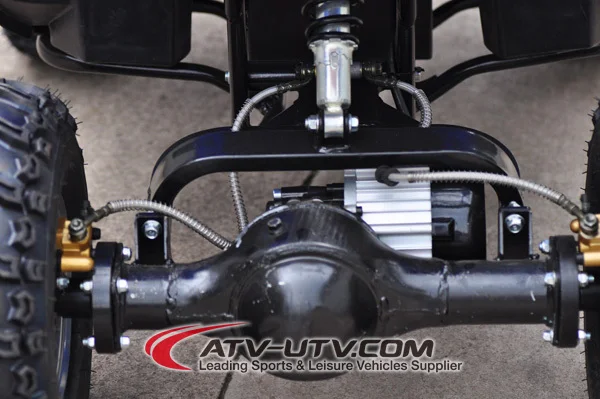 Therefore, after buying an ATV, you need to familiarize yourself with the basics of control.
Therefore, after buying an ATV, you need to familiarize yourself with the basics of control.
To start an electric start engine, turn the key in the ignition switch to the "ON" position, press the brake and press the green electric start button for no longer than 5 seconds.
Typically, ATV gear shifts are automatic - the shift lever is needed to select high, low, neutral or reverse gears, as well as select the parking mode.
To start or increase speed, you need to press the thumb of your right hand on the throttle. The gearbox must be in the “H” or “L” position. The middle finger of the right hand rests on the front brake lever while driving, and the middle and index fingers of the left hand rest on the rear brake lever.
Also on the steering wheel there are buttons for turning on the four-wheel drive and locking the differential. Four-wheel drive will be needed when driving off-road, slippery roads, transporting goods and towing.![]() A differential lock is needed so that the wheels of the ATV spin synchronously - for example, it will help to drive out if one of the wheels is stuck in the mud, and the second remains on a stable surface. When the lock is off, in such a situation, only the wheel that is stuck will spin.
A differential lock is needed so that the wheels of the ATV spin synchronously - for example, it will help to drive out if one of the wheels is stuck in the mud, and the second remains on a stable surface. When the lock is off, in such a situation, only the wheel that is stuck will spin.
Whether it is possible to turn on the four-wheel drive and blocking on the go and at what speed - should be indicated in the instruction manual. At the same time, regardless of the model of the ATV, the lock cannot be turned on after a jam, since the differential gears must engage without load.
1 - ignition key. 2 - starter button. 3 - light switch. 4 - signal.
1 - throttle lever. 2 - switch 2WD / 4WD. 4 - fuse.
1 - throttle lever. 3 - 4WD / LOCK differential lock switch. 4 - fuse.
Standing up makes it easier to avoid tipping the ATV by shifting your body weight.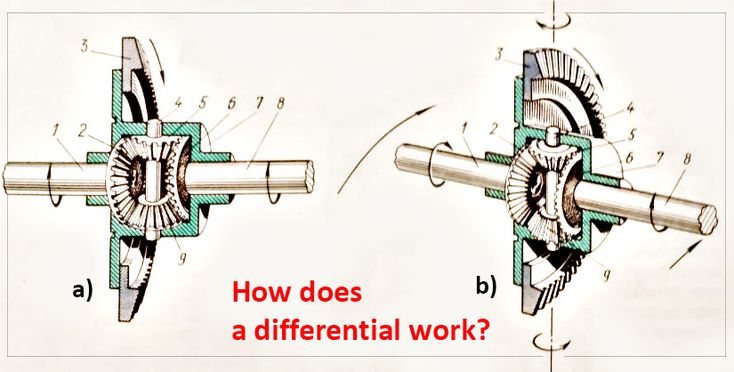 There are 3 main racks:
There are 3 main racks:
The worst stance is when the back is tense, the person leans on his hands, and his legs are straight. In this case, the body does not absorb shocks and shocks, and the bones, intervertebral discs and joints experience a strong load. In addition, control over technique worsens and fatigue increases.
middle rack
A-pillar
rear pillar
To climb, you need to shift into a low gear, take the front stand and drive at medium engine speeds.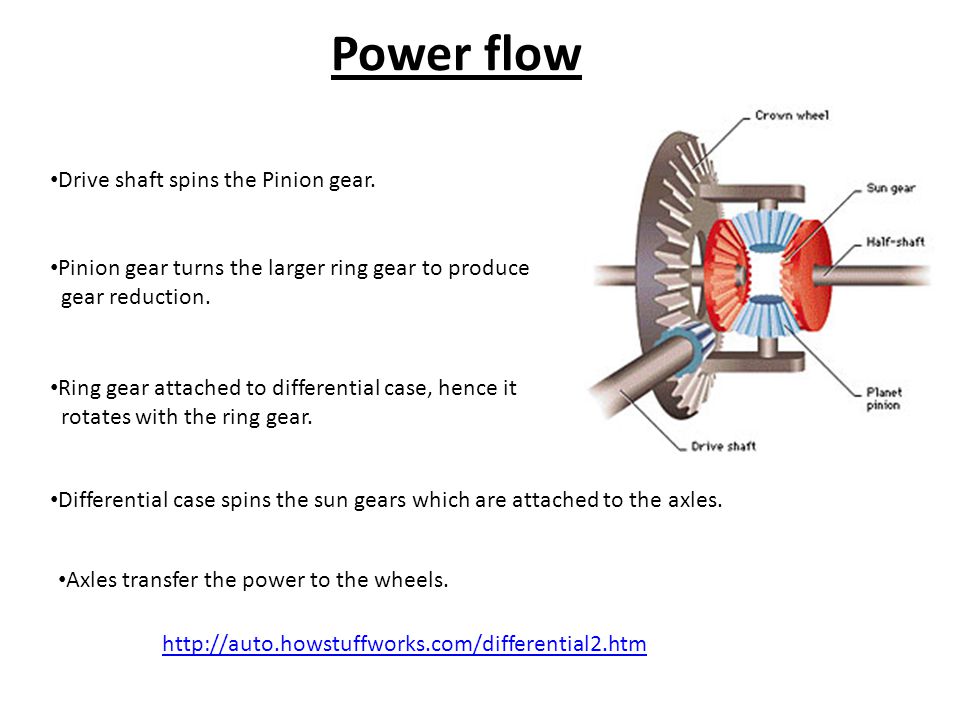 It is impossible to sharply press the gas when driving up a slope or mountain - there is a risk of rolling over.
It is impossible to sharply press the gas when driving up a slope or mountain - there is a risk of rolling over.
When stopping in the middle of a hill, drive off carefully, as a sudden start will be followed by tipping over. If the ATV rolls backwards, you need to press the front brake lever, and after stopping, turn off the engine, put the equipment on the handbrake, turn around manually, slide down and try again.
To descend, you need to take the rear rack and shift into a lower gear. In order not to roll over, brake should be simultaneously front and rear brakes. To avoid skidding, you can not change the trajectory of movement and speed abruptly, as well as brake too hard. It is better not to touch the gas lever when descending.
To drive downhill, shift into low gear and shift your body weight towards the top. Don't hit the gas hard and don't brake hard. You can also fall when making a sharp turn. If the slope is steep and the ground on it is slippery, it is better not to risk it.
If the slope is steep and the ground on it is slippery, it is better not to risk it.
To enter a tight turn, lean on the outside footrest and tilt your upper body inward. On slippery surfaces, shifting forward will improve handling, and shifting back will improve the grip of the drive wheels with the road.
Before driving into deep mud, you need to make sure that there are no logs, large stones and other obstacles in it, and the soil is not marshy. You should drive smoothly, without sharp pressure on the gas lever. At a slow speed, high engine speeds should not be allowed - the wheels will begin to slip and dig deeper. If the ATV has sunk deep into the mud, after releasing it, you need to dry the brakes with a few clicks on the levers.
To estimate the trajectory of the ATV in advance, you need to look into the distance and not fix your eyes on any one object.